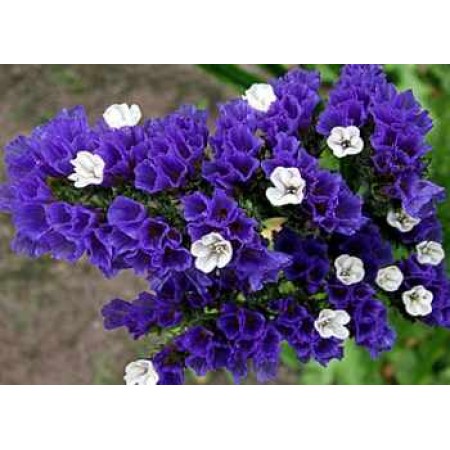Rules for growing statice

Statica is a multi-colored plant, in the genus of which, according to various sources, there are about 300 species. Most often it can be found in Eurasia, but some varieties grow in more severe conditions. If you decide to grow statice in your own personal plot, then it will be useful for you to find out what rules should be followed.
How to plant statice in the garden
For a flower, the best place on the site will be one that is well lit for most of the day. The presence of shade adversely affects growth - due to a lack of ultraviolet, shoots will not be able to grow to their final size. On the other hand, the city is not at all afraid of drafts, so special protection against drafts can not be planned.
Soddy, sandy or loamy soil will be suitable soil for the Statica - in this regard, you can also be guided by your own preferences. Planting flowers is the best thing at the beginning of summer, when you will be sure that the coolness and frost will not return.
Static Care
When all the preparatory procedures are completed and you planted several seeds in pre-planned holes (there should be a distance of at least 25-40 centimeters between them), you can not worry about the fact that without constant care the flowers will die. All your care for the planted statice will be limited to periodic watering of the soil, loosening of the soil and removal of weeds. During rainy summers and autumn, you don’t need to water the plants at all, since they do not need a huge amount of liquid.
Depending on the saturation of the soil with minerals, fertilizing should only be done in cases where the soil is poor in itself. For this, a special mineral solution is optimal, which is applied to the soil with a frequency of once every 2-3 weeks. With the onset of the first months of autumn, feeding is not necessary, since the statice gradually begins to "fall asleep."
Wintering flower
Certain varieties of statice can easily tolerate frost with a decrease in temperature to -30 degrees Celsius, but most plants are recommended to be protected from severe frosts. As soon as the flower begins to wither (the leaves turn yellow and dry), the dying parts are removed (both leaves and stems), cut off at ground level. The processes are covered with straw, brushwood or the same trimmed leaves.
As you can see, cultivating and caring for the statice is a common, effortless task. At the same time, these bright flowers can maintain their color saturation and richness for several seasons, surviving frosts and dissolving with the onset of the first spring heat.